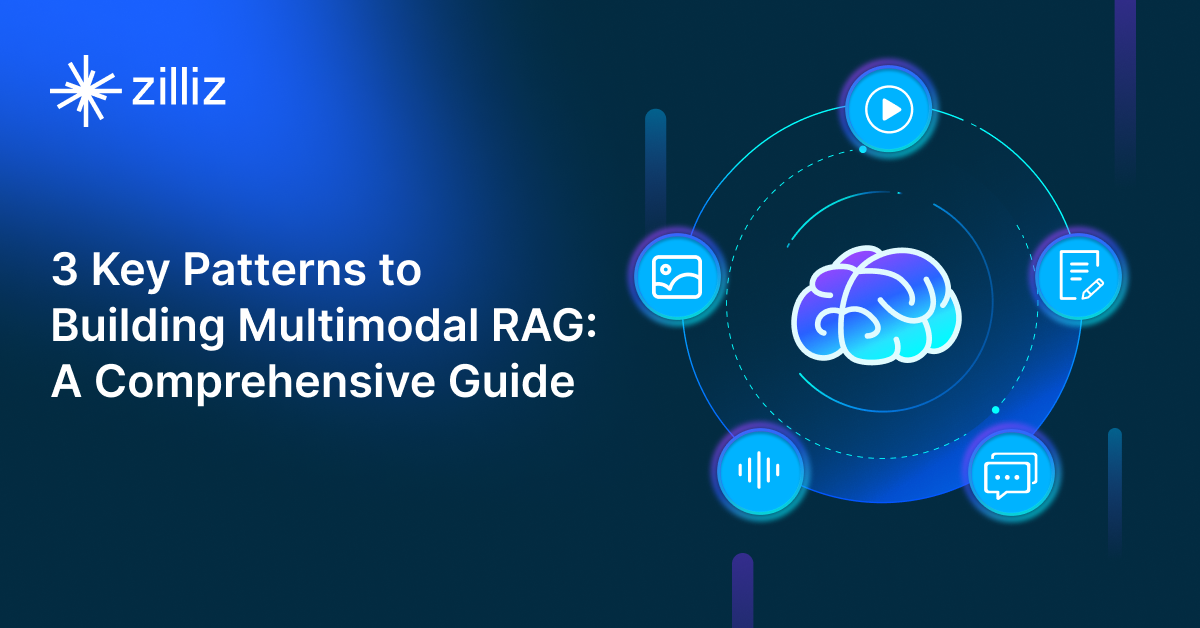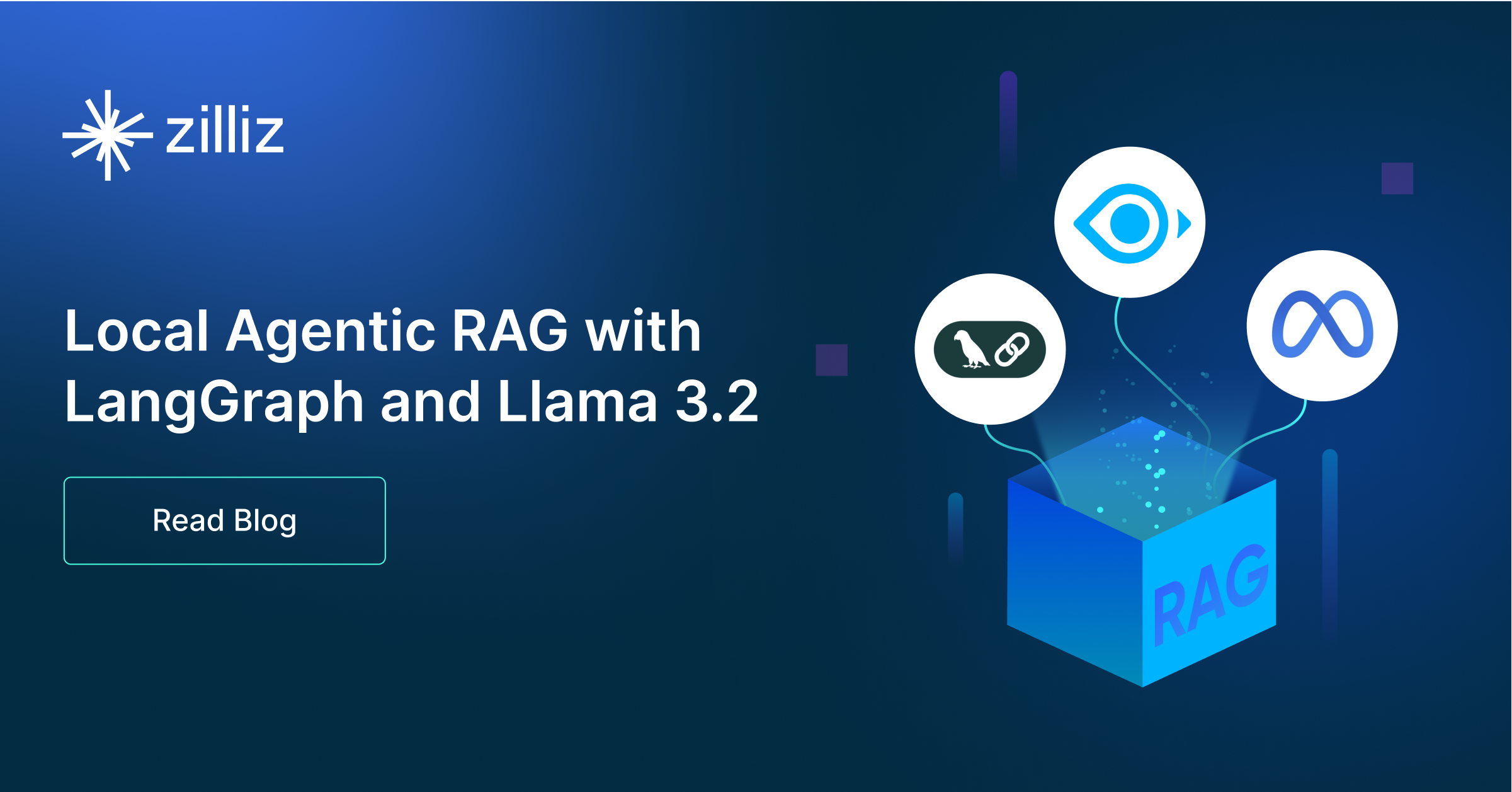Build RAG Chatbot with LangChain, OpenSearch, NVIDIA Qwen2.5-7B-Instruct, and mistral-embed
Introduction to RAG
Retrieval-Augmented Generation (RAG) is a game-changer for GenAI applications, especially in conversational AI. It combines the power of pre-trained large language models (LLMs) like OpenAI’s GPT with external knowledge sources stored in vector databases such as Milvus and Zilliz Cloud, allowing for more accurate, contextually relevant, and up-to-date response generation. A RAG pipeline usually consists of four basic components: a vector database, an embedding model, an LLM, and a framework.
Key Components We'll Use for This RAG Chatbot
This tutorial shows you how to build a simple RAG chatbot in Python using the following components:
- LangChain: An open-source framework that helps you orchestrate the interaction between LLMs, vector stores, embedding models, etc, making it easier to integrate a RAG pipeline.
- OpenSearch: An open-source search and analytics suite derived from Elasticsearch. It offers robust full-text search and real-time analytics, with vector search available as an add-on for similarity-based queries, extending its capabilities to handle high-dimensional data. Since it is just a vector search add-on rather than a purpose-built vector database, it lacks scalability and availability and many other advanced features required by enterprise-level applications. Therefore, if you prefer a much more scalable solution or hate to manage your own infrastructure, we recommend using Zilliz Cloud, which is a fully managed vector database service built on the open-source Milvus and offers a free tier supporting up to 1 million vectors.)
- NVIDIA Qwen2.5-7B-Instruct: This advanced language model is designed for instruction-following tasks, leveraging the capabilities of 7 billion parameters to comprehend and generate diverse text responses. Its strengths lie in natural language understanding and contextual adaptability, making it ideal for applications in tutoring, conversational agents, and automated content generation across various domains.
- Mistral-Embed: Mistral-Embed is a cutting-edge embedding model designed for high-dimensional text representation. It excels in tasks such as semantic search, similarity measurement, and recommendation systems, providing accurate contextual embeddings. Ideal for enhancing NLP applications, it balances performance with scalability, making it suitable for both research and real-world implementations.
By the end of this tutorial, you’ll have a functional chatbot capable of answering questions based on a custom knowledge base.
Note: Since we may use proprietary models in our tutorials, make sure you have the required API key beforehand.
Step 1: Install and Set Up LangChain
%pip install --quiet --upgrade langchain-text-splitters langchain-community langgraph
Step 2: Install and Set Up NVIDIA Qwen2.5-7B-Instruct
pip install -qU "langchain-nvidia-ai-endpoints"
import getpass
import os
if not os.environ.get("NVIDIA_API_KEY"):
os.environ["NVIDIA_API_KEY"] = getpass.getpass("Enter API key for NVIDIA: ")
from langchain.chat_models import init_chat_model
llm = init_chat_model("qwen/qwen2.5-7b-instruct", model_provider="nvidia")
Step 3: Install and Set Up mistral-embed
pip install -qU langchain-mistralai
import getpass
import os
if not os.environ.get("MISTRALAI_API_KEY"):
os.environ["MISTRALAI_API_KEY"] = getpass.getpass("Enter API key for MistralAI: ")
from langchain_mistralai import MistralAIEmbeddings
embeddings = MistralAIEmbeddings(model="mistral-embed")
Step 4: Install and Set Up OpenSearch
pip install --upgrade --quiet opensearch-py langchain-community
from langchain_community.vectorstores import OpenSearchVectorSearch
opensearch_vector_search = OpenSearchVectorSearch(
"http://localhost:9200",
"embeddings",
embedding_function
)
Step 5: Build a RAG Chatbot
Now that you’ve set up all components, let’s start to build a simple chatbot. We’ll use the Milvus introduction doc as a private knowledge base. You can replace it with your own dataset to customize your RAG chatbot.
import bs4
from langchain import hub
from langchain_community.document_loaders import WebBaseLoader
from langchain_core.documents import Document
from langchain_text_splitters import RecursiveCharacterTextSplitter
from langgraph.graph import START, StateGraph
from typing_extensions import List, TypedDict
# Load and chunk contents of the blog
loader = WebBaseLoader(
web_paths=("https://milvus.io/docs/overview.md",),
bs_kwargs=dict(
parse_only=bs4.SoupStrainer(
class_=("doc-style doc-post-content")
)
),
)
docs = loader.load()
text_splitter = RecursiveCharacterTextSplitter(chunk_size=1000, chunk_overlap=200)
all_splits = text_splitter.split_documents(docs)
# Index chunks
_ = vector_store.add_documents(documents=all_splits)
# Define prompt for question-answering
prompt = hub.pull("rlm/rag-prompt")
# Define state for application
class State(TypedDict):
question: str
context: List[Document]
answer: str
# Define application steps
def retrieve(state: State):
retrieved_docs = vector_store.similarity_search(state["question"])
return {"context": retrieved_docs}
def generate(state: State):
docs_content = "\n\n".join(doc.page_content for doc in state["context"])
messages = prompt.invoke({"question": state["question"], "context": docs_content})
response = llm.invoke(messages)
return {"answer": response.content}
# Compile application and test
graph_builder = StateGraph(State).add_sequence([retrieve, generate])
graph_builder.add_edge(START, "retrieve")
graph = graph_builder.compile()
Test the Chatbot
Yeah! You've built your own chatbot. Let's ask the chatbot a question.
response = graph.invoke({"question": "What data types does Milvus support?"})
print(response["answer"])
Example Output
Milvus supports various data types including sparse vectors, binary vectors, JSON, and arrays. Additionally, it handles common numerical and character types, making it versatile for different data modeling needs. This allows users to manage unstructured or multi-modal data efficiently.
Optimization Tips
As you build your RAG system, optimization is key to ensuring peak performance and efficiency. While setting up the components is an essential first step, fine-tuning each one will help you create a solution that works even better and scales seamlessly. In this section, we’ll share some practical tips for optimizing all these components, giving you the edge to build smarter, faster, and more responsive RAG applications.
LangChain optimization tips
To optimize LangChain, focus on minimizing redundant operations in your workflow by structuring your chains and agents efficiently. Use caching to avoid repeated computations, speeding up your system, and experiment with modular design to ensure that components like models or databases can be easily swapped out. This will provide both flexibility and efficiency, allowing you to quickly scale your system without unnecessary delays or complications.
OpenSearch optimization tips
To optimize OpenSearch in a Retrieval-Augmented Generation (RAG) setup, fine-tune indexing by enabling efficient mappings and reducing unnecessary stored fields. Use HNSW for vector search to speed up similarity queries while balancing recall and latency with appropriate ef_search and ef_construction values. Leverage shard and replica settings to distribute load effectively, and enable caching for frequent queries. Optimize text-based retrieval with BM25 tuning and custom analyzers for better relevance. Regularly monitor cluster health, index size, and query performance using OpenSearch Dashboards and adjust configurations accordingly.
NVIDIA Qwen2.5-7B-Instruct Optimization Tips
To optimize the NVIDIA Qwen2.5-7B-Instruct model in a Retrieval-Augmented Generation (RAG) setup, consider implementing mixed precision training to reduce memory footprint and accelerate training times. Fine-tune the model on domain-specific data to enhance relevancy in generated responses while adjusting the retrieval component's cosine similarity threshold to balance precision and recall. Utilize an efficient caching mechanism to store frequently accessed data, ensuring low-latency responses. Experiment with varying the number of retrievals based on query complexity, and leverage batch processing during inference to maximize throughput. Finally, keep an eye on hardware utilization metrics to adjust configurations and achieve optimal performance.
mistral-embed optimization tips
mistral-embed is a versatile embedding model suitable for diverse text-based RAG applications. To enhance retrieval, optimize embedding quality by fine-tuning on domain-specific data to capture nuanced semantic relationships. Use efficient vector search techniques like FAISS or HNSW to quickly identify relevant documents from large datasets. For better storage management, compress embeddings without sacrificing accuracy, such as through quantization or dimensionality reduction. To maximize throughput, batch embedding requests and use multi-threading to parallelize computations. Regularly update the embedding store with new data to ensure freshness and accuracy in retrieval. Optimize model performance by tuning hyperparameters such as temperature and top-k to balance precision and diversity in retrieved results.
By implementing these tips across your components, you'll be able to enhance the performance and functionality of your RAG system, ensuring it’s optimized for both speed and accuracy. Keep testing, iterating, and refining your setup to stay ahead in the ever-evolving world of AI development.
RAG Cost Calculator: A Free Tool to Calculate Your Cost in Seconds
Estimating the cost of a Retrieval-Augmented Generation (RAG) pipeline involves analyzing expenses across vector storage, compute resources, and API usage. Key cost drivers include vector database queries, embedding generation, and LLM inference.
RAG Cost Calculator is a free tool that quickly estimates the cost of building a RAG pipeline, including chunking, embedding, vector storage/search, and LLM generation. It also helps you identify cost-saving opportunities and achieve up to 10x cost reduction on vector databases with the serverless option.
 Calculate your RAG cost
Calculate your RAG cost
What Have You Learned?
By diving into this tutorial, you’ve unlocked the power of building a RAG system from the ground up! You learned how LangChain acts as the glue, orchestrating the flow between your data, your AI model, and your users. By integrating OpenSearch as your vector database, you now have a lightning-fast way to store and retrieve embeddings generated by Mistral-Embed, which transforms raw text into rich numerical representations. This setup lets NVIDIA’s Qwen2.5-7B-Instruct—a powerhouse LLM—generate precise, context-aware responses by combining retrieved data with its own vast knowledge. You saw firsthand how chunking documents, embedding them, and querying OpenSearch creates a seamless pipeline that bridges static data with dynamic AI reasoning. Along the way, you picked up optimization tricks like balancing chunk sizes for accuracy and speed, and even got a tool to estimate costs with the free RAG cost calculator, ensuring your projects stay efficient and budget-friendly.
Now that you’ve seen the magic of combining frameworks, databases, and models, the real adventure begins! You’re equipped to tweak each component—swap LLMs, experiment with embedding models, or scale OpenSearch clusters—to tailor RAG systems for anything from customer support bots to research assistants. Remember, every optimization you apply and every creative twist you add pushes the boundaries of what’s possible. So fire up your IDE, load your data, and start building. The tools are in your hands, the concepts are clear, and the AI landscape is yours to explore. Go turn those ideas into reality—your next breakthrough is just a RAG pipeline away! 🚀
Further Resources
🌟 In addition to this RAG tutorial, unleash your full potential with these incredible resources to level up your RAG skills.
- How to Build a Multimodal RAG | Documentation
- How to Enhance the Performance of Your RAG Pipeline
- Graph RAG with Milvus | Documentation
- How to Evaluate RAG Applications - Zilliz Learn
- Generative AI Resource Hub | Zilliz
We'd Love to Hear What You Think!
We’d love to hear your thoughts! 🌟 Leave your questions or comments below or join our vibrant Milvus Discord community to share your experiences, ask questions, or connect with thousands of AI enthusiasts. Your journey matters to us!
If you like this tutorial, show your support by giving our Milvus GitHub repo a star ⭐—it means the world to us and inspires us to keep creating! 💖
- Introduction to RAG
- Key Components We'll Use for This RAG Chatbot
- Step 1: Install and Set Up LangChain
- Step 2: Install and Set Up NVIDIA Qwen2.5-7B-Instruct
- Step 3: Install and Set Up mistral-embed
- Step 4: Install and Set Up OpenSearch
- Step 5: Build a RAG Chatbot
- Optimization Tips
- RAG Cost Calculator: A Free Tool to Calculate Your Cost in Seconds
- What Have You Learned?
- Further Resources
- We'd Love to Hear What You Think!
Content
Vector Database at Scale
Zilliz Cloud is a fully-managed vector database built for scale, perfect for your RAG apps.
Try Zilliz Cloud for Free


